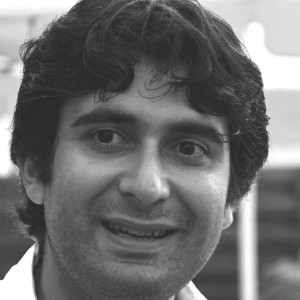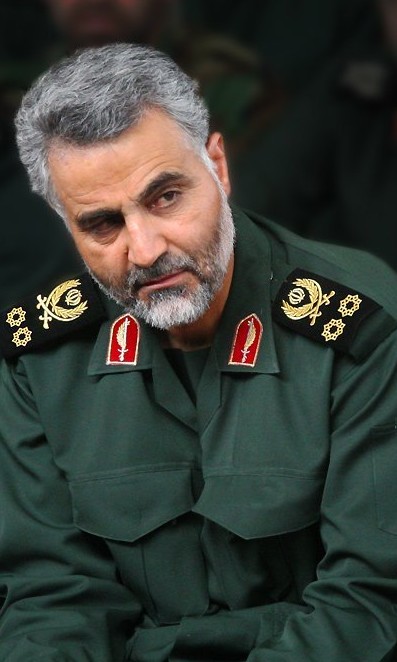
By Ramyar Hassani:
As the new Middle-East has become the battlefield of different extremist groups linked to the regional countries, Iran knows how to conduct proxy wars. The Sunni-Arab countries are on one side and Shiite-promoter Iran is on the other side of an ideological war. However, sometimes they are fighting from the same trenches and front-line against the common enemy such as their support to terrorist organizations to hit Israel.
Invisible as a ghost, murderous and lethal as a cobra, and weighty as an experienced diplomat. Since the ISIL rampage last year in Iraq, this dangerous ghost has become visible and sometimes shows off on purpose. General Qasem Soleimani, the commander of the Quds Force – a division of the Iranian Revolutionary Guards primarily responsible for extraterritorial military and clandestine operations – is the one I am referring to. This Iranian commander has got a lot of attention on both an international and regional level. But is he the first of his kind in Iran’s history since the revolution of 1979?
Of course, he is not the first Iranian commander whose successful military plans and offensive management has freaked out the enemies. Yet Iran has not had too many of this kind of commanders who are simultaneously dangerous and smart. Actually, there have been very few.
Almost two decades before the power was controlled by Ayatollahs in Iran, there was a smart guy who started his political activities simultaneously with passing the academic levels one by one in the best universities of the US. He had become radicalized and decided to leave the US to join the ideological Shiite-Sunni war. His name was Mustafa Chamran, who became as famous in his time as Soleimani.

Mostafa Chamran,left, sitting with Sadegh Khalkhali, Chief Justice of the revolutionary courts (the cleric in the middle)
Certainly, there are basic differences between Chamran and Soleimani, but they are both the same fundamentally. Let me explain in just a few more paragraphs.
Both Soleimani and Chamran are very similar to each other with regards with their sense of timing. The two commanders have invisible and visible periods of time on purpose. Chamran was fighting alongside the Musa Sadr followers at the position of top rank commander and later on, after the successful revolution in Iran, he was deeply involved in the state power, but invisibly. He became visible as soon as his first mission was done in Kurdistan of Iran. The same has happened in the case of Soleimani on different occasions. He was invisible but very active in the entire Middle-East before the ISIL – IS or ISIS – rampage in Iraq. Later on, he remained active but this time visibly.
It is worth mentioning that both Chamran and Soleimani have had experience of operating in Kurdistan. Chamran’s first vital mission in Iran after the revolution was leading the three weeks campaign in Kurdistan of Iran that began with the Paveh mission to push-back the Kurdish Peshmargas at the time. And Soleimani has appeared in Iraqi Kurdistan at the front-lines of the war against ISIL.
Chamran was endorsed by the Shiite marja’ of his time, Ayatollah Khomaini. So is Soleimani: Ayatollah Khamenei has called General Soleimani an “alive martyr”. It is vital for a commander of an ideological-religious war to be endorsed by the highest religious figure.
In the midst of the latest unrest in Yemen, the rumor of Soleimani’s trip to help the Houthis went viral. He has been traveling around the Middle-East, advising and organizing the Shiite militias. So did Chamran. Chamran was doing exactly the same, for instance, in the Lebanon. He helped Musa Sadr by commanding the military wing and fighting alongside the Lebanese Shiite militias. Both men fulfilled very tough military training and passed difficult missions.
In a sectarian and ideological-religious war, it is very important to have a charismatic commander who has been clandestine and out of sight for a long time. After a while, the militias of the same sect desperately seek opportunities to serve in one of this commander’s missions. Therefore, as soon as the commander appears, he can do much more than his own capabilities as the militias are ready to obey and enforce all of his orders.
Of course, an experienced, authoritative, and brutal commander who has a lot of influence among militia groups and terrorist organizations, can be dangerous for the region and heroic for his sympathizers at the same time. But, here is the point, how long is Soleimani going to survive in the mess that he himself has helped create? How long will his competitors inside the IRGC (Iranian Revolutionary Guard Corps) tolerate this? And how long will it take to put him to sleep?
Back in the early ’80s, Chamran had the same high position. He had become visible since 1979 and it took him two years to be removed from all the equations forever. However, Chamran had the privilege of living before the start of the high technology surveillance and cyber war era. Soleimani does not enjoy this privilege and all of his moves are tracked down immediately although he has been successful til now. Nonetheless, his victories might last for a while but it will be put to sleep eventually. According to one hearsay report, Chamran was killed by a comrade while another story says that he was killed by the shelling of the Iraqi army (this being during the long Iran-Iraq war). Both scenarios can happen to Soleimani. In the case of an illegal paramilitary commander who is surrounded by competitors among his kinsmen and wanted by the international community, the bullet can come from any side.
In sum, Soleimani’s fate will most likely be the same as Chamran’s. The war criminals, terrorists and wrongdoers have never been able to escape forever. That’s the main reason that extremist religious commanders such as Soleimani have convinced themselves that, when they get killed, they will levitate to heaven.
Ramyar Hassani is from Iran-held Kurdistan. Ramyar worked as human rights observer in Latin America, Europe and Kurdistan. You can follow him on Twitter @RamyarHassani
.jpg)




By all respect let us not forget that Chamran and his killer gang were SUPPORTED by Barzani and Talibani. Our Kurdish brothers broke the heart and the back of the Kurdish resistance against the evil Khomeinei by killing us Kurds for Mullahs. As we can see this evil is today grown to a monster in the whole region and it was TREASON that make these men get their name. A big shame to our Kurdish brothers who never had the courage to say sorry and on top of that maintain best relationship with the evil in Tehran, despite all the crimes. I much laugh when they say they want to have independent Kurdistan. That land should be called Barzan/Taliban-satn instead of Kurdistan.
Lets not forget who supplied Sadam Hussein with chemical gas and weapons of mass destruction to use them against kurds.Lets not forget who were the using NATO arms against Kurds.Lets not forget who become the reason that people like Khalkhali ,Chamran ,Solemani and his friends become the reason that they came to power Iran .
All along history ,Kurdish people were abused and used as a card by the neighboring countries for gaining political and economical concessions .Until two decades ago ,many countries of the east and west world used to cooperate with the neighboring countries to dissolve Kurdish people and cause within the neighboring states.
The neighboring countries always took advantage of the poor social,economical and political situations of Kurdish people .They would manipulate and use them,and would left them no room and choice but to cooperate with their orders and agendas so that to survive.
The neighboring countries and even some of the big powers of the world used the policy of divide and conquer and assimilation against Kurds.They implemented this policy on Kurdish people all along history and in all four parts of kurdistan.It is just a miracle that Kurds people have been survived despite all the disastrous phases,such as genocides ,mass killing ,civil wars ,poverty ,immigration and denial of from all basic human rights, they have gone through all along history.How many treaties and agreement have been sign against and for the recognition of the rights of Kurds at the international and national levels?Of course ,many.but,all the treaties ,agreements and promises whether they were signed for or against Kurds ,had been broken and dishonored by the same neighboring and many other none-neighboring people whom have sign them.All these treaties and agreements had hollow bases and were not signed for real and good intention , but rather sign to muffle the voices of Kurds and yet control their resistance.
It always makes me very sad whenever ,Someone reminds me of the clashes and killing that happened between the Kurdish brothers from different political parties and parts of Kurdistan, yet I do understand that a brother would never choose to kill a brother deliberately unless an external force had pushed him directly or indirectly and made him to kill.It is a tough ,painful and tragic situation when you are stuck between two choices ,to either kill your brother or being killed.It becomes the matter of life and death to you.You never wish to kill your brother unless the sense of mercy , love and brotherhood has been taken away from between and had been given away for a more important cause and reason.You never kill your brother unless the choice is beyond your power and will.Nonetheless, I believe you should not kill your brother nomatter even if it would cost your life if you refuse to do so.Treason ,bringsabout animosity and hate.It shaters the chains of love and brotherhood ,whereas sacrifices,and loyalty bring about,peace ,unity,power ,freedom and victory if not for you ,at least for your beloved once after your death.
Regards
Kuvan Bamarny/Duhok